
What Are Tin Snips?
The aviation snips, also known as tin snip cutter or compound snips, even though they are distinct from types of snips, are the best hand tools for cutting metal sheets. It is easy to cut in a straight line with tin snips. It’s making curved cuts that can be tricky, especially if you’re holding the wrong tool.
Tin snips, also known as tin snips, tinner snips, and shears, are hand tools specifically designed for cutting sheet metal. Tin snips look similar to ordinary scissors; however, they are much sturdier and allow control for precise cutting.
Different Types:
There are varieties of different types of tin snips that are usually distinguished by the shape and direction of the blade. The three commons types are straight-cut tin snips, offsets tin snips, and vertical tin snips.
1. Straight-Cut Tin Snips
The Straight-cut tin snips have straight blades that are slightly shorter than the length of the scissor blade. However, the blades are much thicker & heavier than scissor blades to enables them to cut through sheet metal.
These tin snips usually have yellow handles, so you can quickly separate them with an offset snip. Offsets tin snips fall into two categories:
a. Clockwise-cut tin snips:-
As the name indicates, clockwise cut tin snips are used to cut in clockwise directions. They have a green handle to sets them apart from counterclockwise-cut snips.
b. Counterclockwise-Cut Tin Snips:-
Counterclockwise-cut tin snips can be recognized by their red handles. This tin snip is bests paired with clockwise-cut snips so you can effectively make curved cuts in both directions.
2. Vertical tin snips
The Vertical tin snips have a set of blades that sit at right angles to the handle of the tool, which is why they are also knowns as right-angles tin snips. This tool is ideal for tight spaces where only Snip’s blades can fit.
Types of Tin Snips:
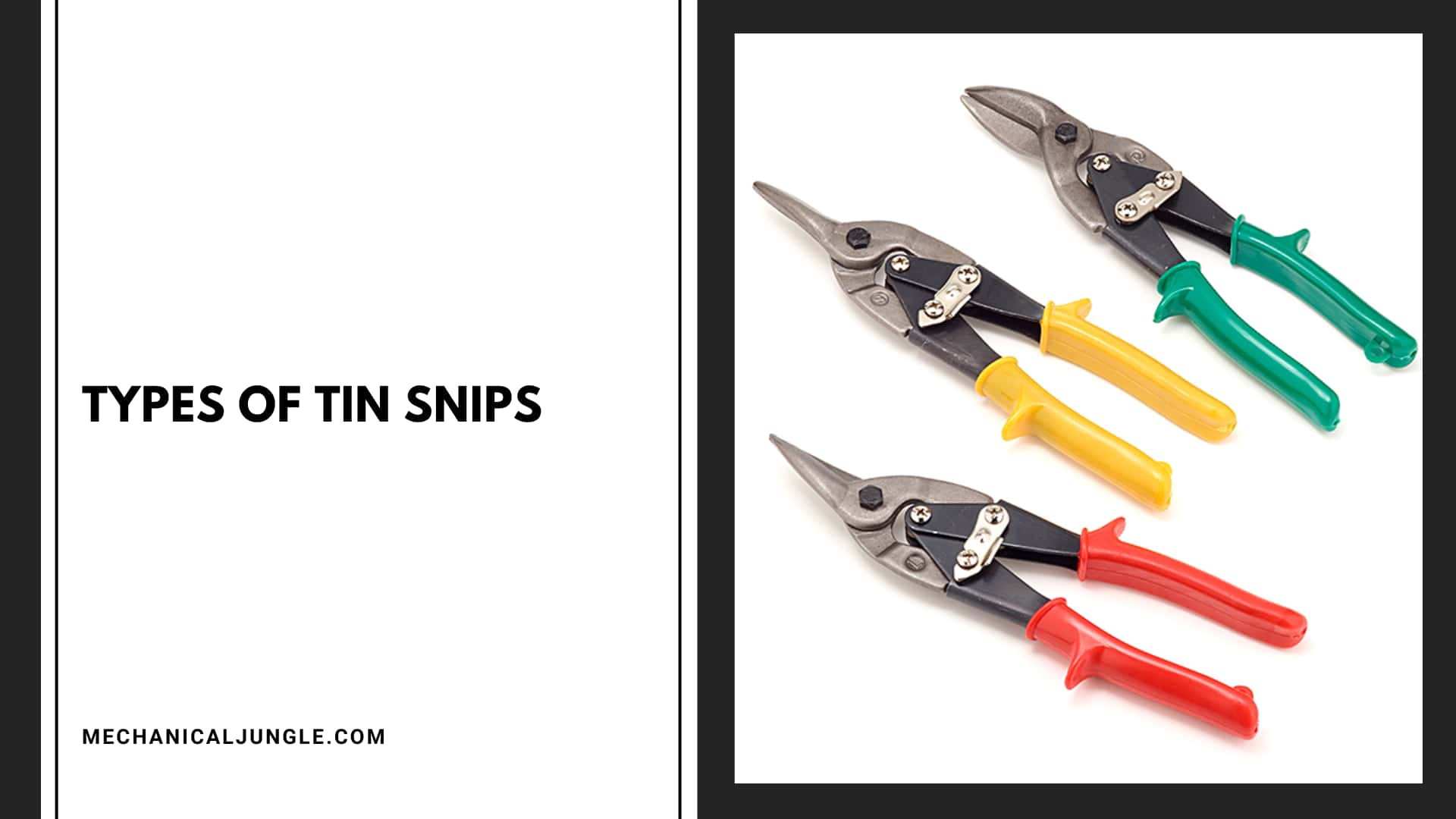
1. Choose Your Tin Snips
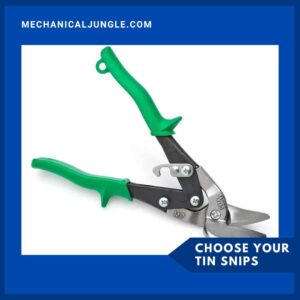
Cutting sheet metal with pieces can be difficult and frustrating. The edges are sharp, the cutoffs are tight and get in the way, snips are bound, or you can’t negotiate the curve.
These problems are common to those of us who don’t work with sheet metal every day. But you don’t have to be a tinsmith to successfully cut sheet metal. With the right tools & few simple techniques, you can make almost any cut with ease.
We’d recommend a pair of tin snips that will get you through 90 percent of the jobs you run. But we’ll also indicate the best tin snips to use for each type of cut we show.
2. IRWIN Tin Snip, Multi-Purpose
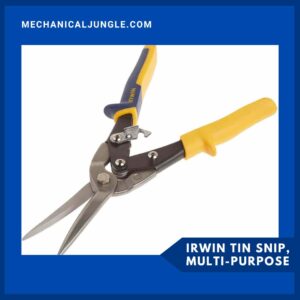
Tin Snip, multi-purpose, 11-3/4-Inch If you’ve been using your tin snips to work on roof repairs, these straight-cut tools are worth a look.
Long, the drop-forged steel blade is ideal for straight cuts in large pieces of metal sheet roofing, and precision-sharp blades cut into the material when cutting edges, making the blade less likely to slip.
These tin snips also have an easy closing latch to keep them secure when they’re not in use and feature a compound sawing action that increases the power you can put into the cut—making it easy to reach 24-gauge cold.
-Roll steel or 26-gauge stainless steel. The grips are padded and textured for a comfortable feel without sacrificing control.
3. Straight Cut Tin Snips

Make long strokes for a long, straight snip tool cut. The straight snip is used for making precise straight cuts. Compound snips are designed more for leverages & maneuverability than straight bites.
Suppose you are using compound snips, fully open and close the jaw with each stroke to maximizes the length of the cuts. Even so, your cuts will probably be a little teary. It cuts metal almost as smoothly as it does paper with scissors.
And the longs blades make it easy to cut straights & leave a smooth edge. Straight-cut tin snips are designed for one purpose that is a simple straight line cutting and trimming. These snips cannot cut curves or circles. They appear simple in design with straight blades and long steel handles.
4. Duckbill Pattern Tin Snips
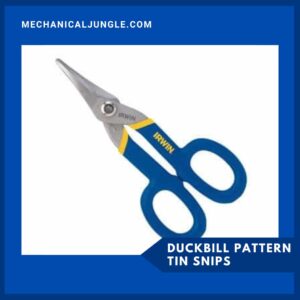
Duckbill pattern tin snips have specially shaped blades for cutting sharp curves and circles. Because of their small blades, these tin snips are designed only for light-duty work, such as cutting metals of high gauge thickness.
5. Bulldog Pattern Tin Snips
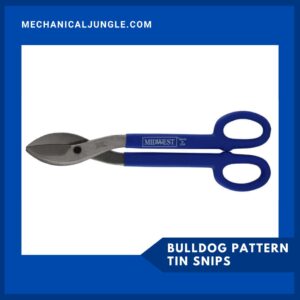
Bulldog pattern tin snips are made for heavy-duty work and are specifically designed for cutting, trimming, or cutting hard alloys. They have shorter blades and longer handles, which gives them more leverage and allows them to cut thick metal up to 16 gauge.
6. Spring-Loaded Tin Snips
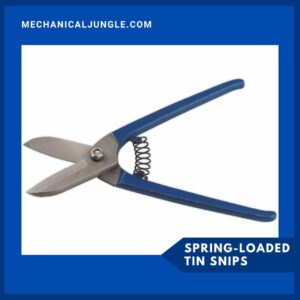
Spring-loaded tin snips have handles that have a compressed or stretched spring between them for heavy-duty work, such as cutting sheet metal of low gauge numbers. They can do this because the spring takes the tension off the muscles of the user’s hand.
7. Curved Tin Snips
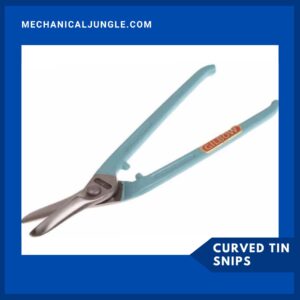
Curved tin snips have round blades that are designed for tasks that require cutting curves or circles. They often resemble straight-cut tin snips in appearance and design, with long handles for control.
8. Jewellers Tin Snips
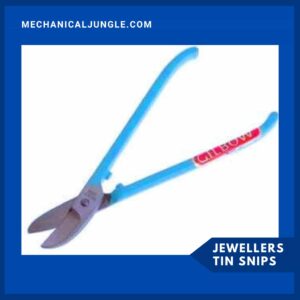
Jewelers tin snips are special types of pieces designed for light-duty metals and complex jobs due to their finely sharp blades.
As their name suggests, they are uses for making jewelry and can be used by both professional silversmiths and hobbyists. Various versions can be purchased for straight or curved cuts.
9. Universal Tin Snips
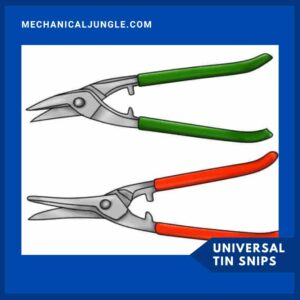
Universal tin snips can be used for straight cuts or long, wide curves. They are available in straight handled, left hand-cranked, or right hand-cranked versions.
10. Utility and Multi-Purpose Tin Snips
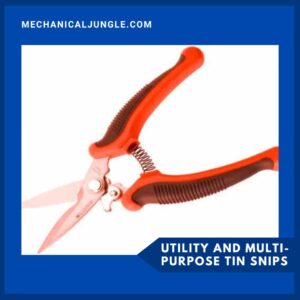
Utility and multi-purpose tin snips are general-purpose tools due to the fact that they are designed to cut wides in a variety of different materials rather than just metal. They can be used to cut and trim many household and workshop items.
11. Straight Pattern Tin Snips

Straight patterned tin snips are often simple in design and strong in construction. These special tin snips are made for heavy-duty metal cutting due to their comfy grip handles and special blades that are made from drop-forge carbon steel.
FAQs about Tin Snips
What Are Tin Snips Used For?
Tin snips are hand tools designed for cutting sheet metal. They are particularly useful for making both straight and curved cuts in metal sheets, depending on the type of snips used.
What Are the Different Types of Tin Snips?
The main types of tin snips include:
- Straight-Cut Tin Snips: For making straight cuts.
- Offset Tin Snips: For cutting curves in either clockwise or counterclockwise directions.
- Vertical Tin Snips: Ideal for tight spaces.
- Duckbill Pattern Tin Snips: For cutting sharp curves and circles.
- Bulldog Pattern Tin Snips: Designed for heavy-duty work with thicker metals.
- Spring-Loaded Tin Snips: For reducing hand strain during heavy-duty cuts.
- Curved Tin Snips: For making curved or circular cuts.
- Jewellers Tin Snips: For intricate, light-duty cuts, often used in jewelry making.
- Universal Tin Snips: Versatile for both straight and curved cuts.
- Utility and Multi-Purpose Tin Snips: For a variety of materials beyond metal.
- Straight Pattern Tin Snips: Heavy-duty tools designed for cutting thicker metal.
How Do I Choose the Right Tin Snips for My Project?
Choose tin snips based on the type of cut you need to make and the material thickness. For straight cuts, use straight-cut snips. For curves, use offset or curved tin snips. For heavy-duty work, bulldog pattern or spring-loaded snips are ideal.
Can Tin Snips Cut Through Thick Metal?
Tin snips can cut through various thicknesses of metal, but the capability depends on the type of snips and the gauge of the metal. Bulldog pattern snips are designed for thicker metals, while standard tin snips are suited for lighter gauges.
How Do I Maintain and Care for My Tin Snips?
Keep your tin snips clean and free from rust by wiping them down after use. Lubricate the moving parts periodically to ensure smooth operation. Store them in a dry place to prevent corrosion.
What Safety Precautions Should I Take When Using Tin Snips?
Wear safety glasses to protect your eyes from metal shavings. Ensure that you use the correct type of snips for the job to prevent accidents. Always cut away from your body and keep your hands clear of the cutting path.
Can Tin Snips Be Used for Cutting Materials Other Than Metal?
While tin snips are primarily designed for metal, some multi-purpose and utility snips can cut through other materials such as plastic or cardboard. However, it’s best to use the appropriate tool for each material to maintain the longevity of your snips.
What Are the Advantages of Using Spring-Loaded Tin Snips?
Spring-loaded tin snips reduce hand fatigue by using a spring mechanism to assist with the cutting action. This makes them ideal for extended use or for cutting tougher materials.
Are There Any Special Tin Snips for Intricate Cuts or Jewelry Making?
Yes, jewellers tin snips are specifically designed for intricate cuts and fine detail work. They have finely sharp blades suited for light-duty tasks and detailed metalwork.
What Factors Should I Consider When Selecting Tin Snips?
Consider the type of cuts you need to make, the thickness and type of metal, and your comfort and hand strength. The handle design and blade type can also affect the ease and accuracy of your cuts.

